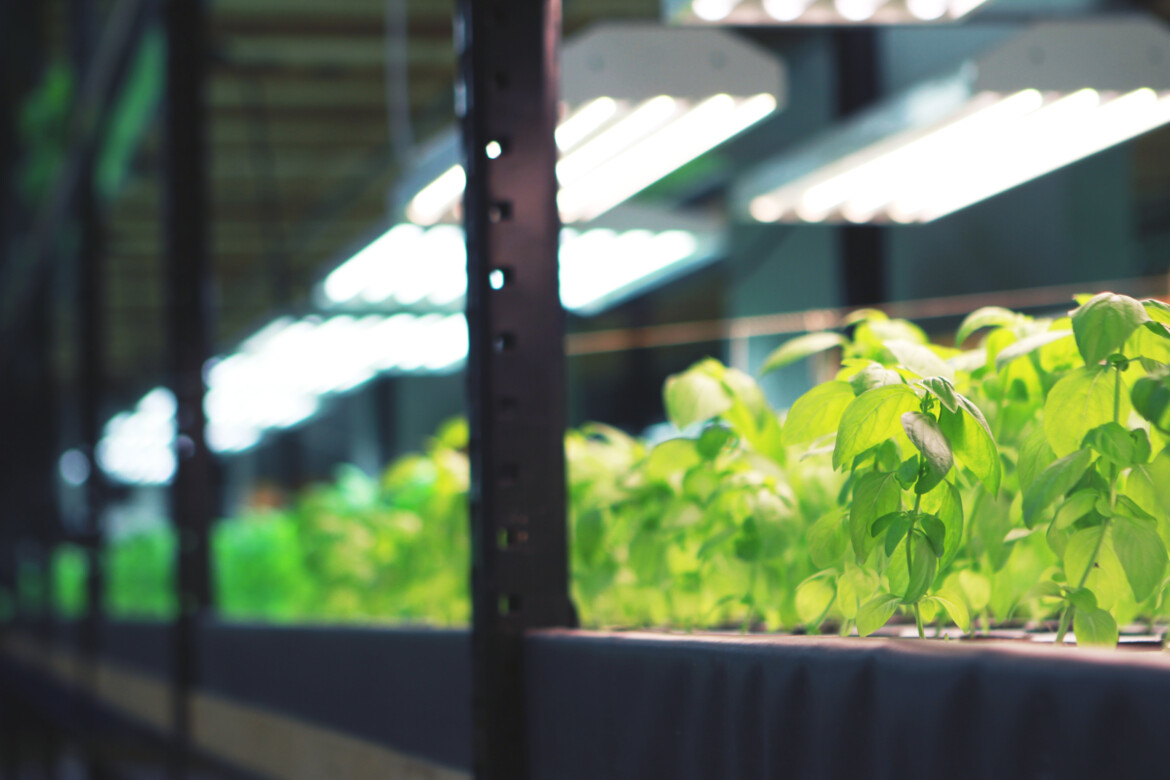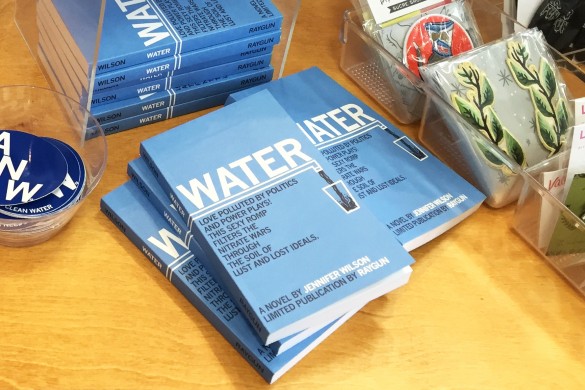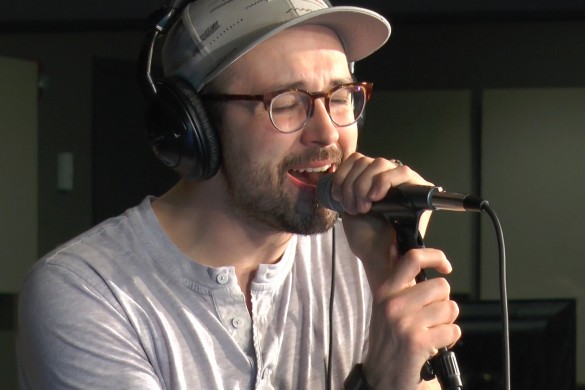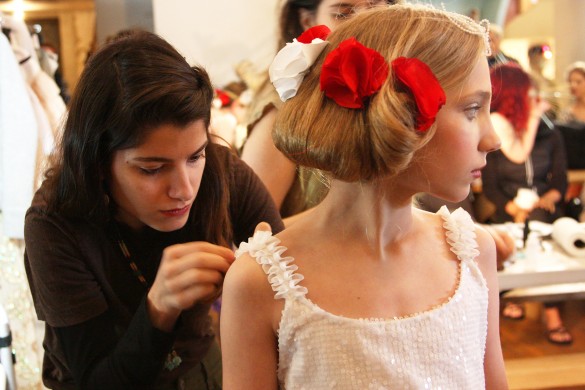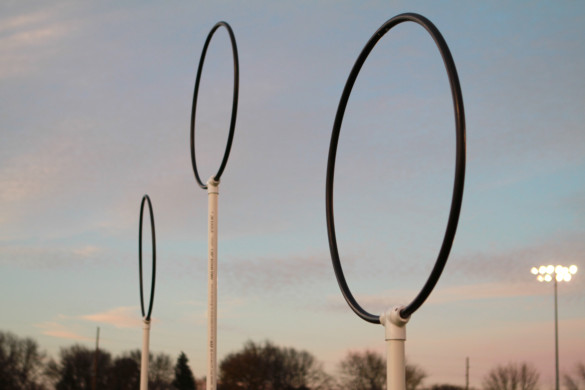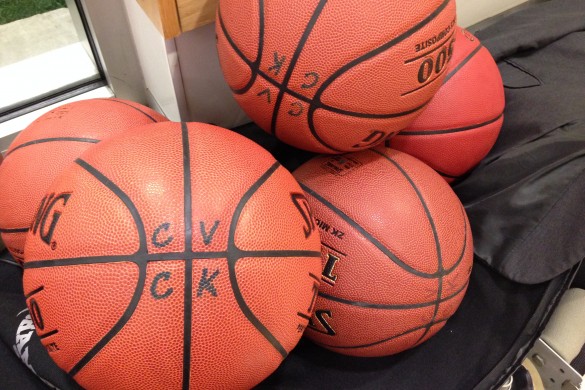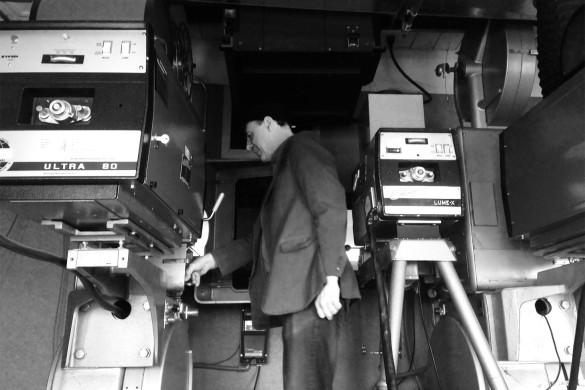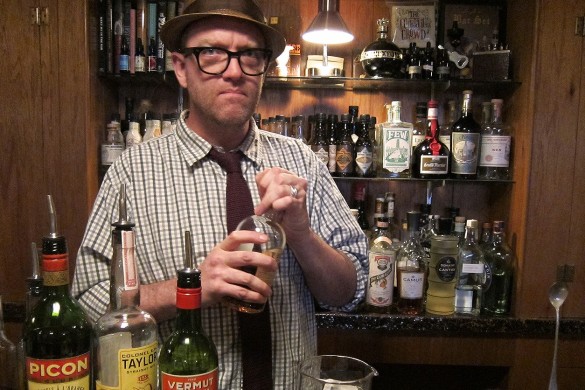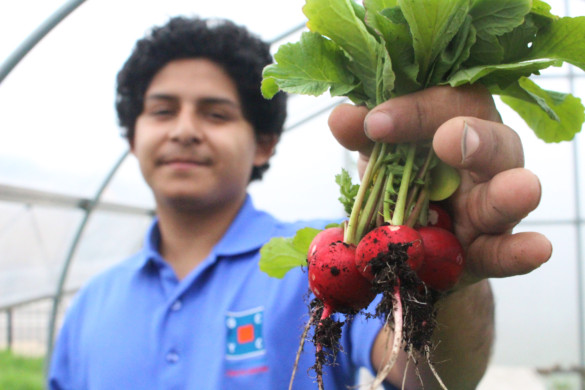Who would’ve thought that tilapia and basil would be the perfect match?
Words and photos by Allison Trebacz
James Godsil had been on the board of sustainable farming nonprofit Growing Power for three years when he started telling people that indoor agriculture had potential. “They said I was a stoner hippie nutcase,” he said. “Then Michelle Obama starts her White House garden and all of the sudden everybody knows about it.”
Godsil and Obama were on to something.
Urban farms across America are finding ways to make urban farming not only sustainable but also economically viable. The largest indoor farm in the U.S., FarmedHere, is in Chicago. It’s 90,000 square feet of an old industrial building converted into a synthetic ecosystem that produces year-round for local grocery stores, farmers’ markets and Whole Foods retailers. And FarmedHere isn’t alone.
There are a few different kinds of urban, or vertical, farming. One of the more economically friendly options is aquaponic farming.
Through intricate biology and a system of light and pipes, aquaponic agriculture recreates a simple ecosystem in a large, indoor space that is capable of producing greens and fish simultaneously. It reduces the adversity crops face by taking away variables like weather, pests and other unpredictable disasters.
Urban Organics of St. Paul is on its way to proving viability as the company gets ready to open a new 80,000 square foot facility just down the street from their 9,000 square foot location. This enormous undertaking is not without its challenges, though.
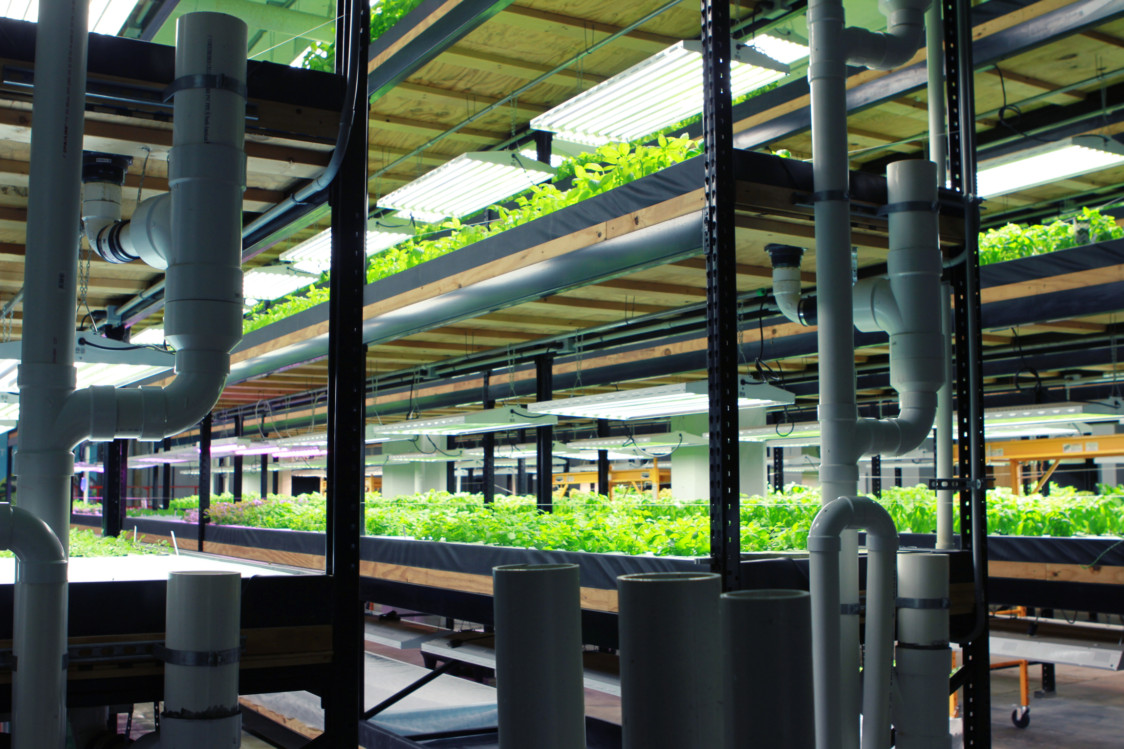
Racks of different plants are stacked to the ceiling at Urban Organics facility in St. Paul. The facility is an old brewery that has been converted to a small farm. Its post-brewery status comes with an additional bonus as well: Having been built a brewery gives Urban Organics access to freshwater wells, so they don’t have to treat the water.
Dave Haiden, president and co-founder of Urban Organics, explained that it’s not easy to build an ecosystem indoors.
“There’s a lot of engineering,” Haiden said. For an aquaponic farm to work, the waste from the fish travels through the water and becomes a natural fertilizer for the plants. In turn, the plants filter out the waste before it returns to the fish—but that’s an oversimplification.
But in its simplest form, an aquaponic system is similar to the cycle that brings a raindrop to your backyard—albeit on a smaller scale and with a little more supervision.
“It’s extremely sustainable,” Haiden said of the aquaponic system. “That’s our goal, once we prove economic viability on a commercial scale with this 80,000 square foot facility. The hope is that this will open the door to financing other firms like us. We’d love to see 50 of these in the next decade.”
If an aquaponic farm is successful, it uses less energy, 98 percent less water, produces nearly zero waste and is self-sustaining.
An indoor farm is relatively inexpensive to implement because it is composed of a series of filters, pumps and PVC pipes. In fact, small commercial systems like those being used for classroom demos can be cheaper than most math or history textbooks. Interested consumers can even buy their own with all the bells and whistles included for under $5,000.
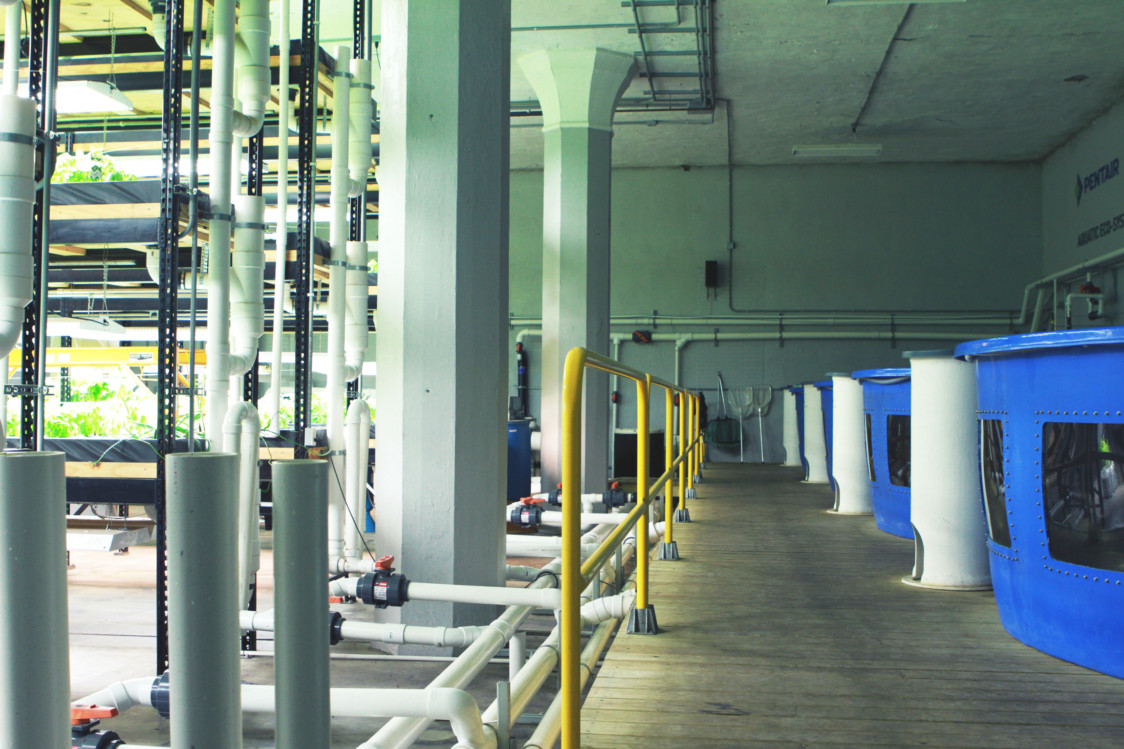
Hybrid striped bass swim through their tanks at Urban Organics. Currently, the group’s tanks hold about 500 fish. In the new facility, the tanks will hold about 7,000 fish. As a result, Urban Organics will serve their greens and protein to more stores and restaurants in the city.
Today, Godsil is working hard as one of the co-founders of the Sweet Water Foundation to bring urban agriculture to communities in Chicago and Milwaukee.
“We’re really on the edge of mainstreaming urban agriculture,” Godsil said. “Let’s say in the eighteenth century, not that many people read, and there were movements to insist that people become textually literate. Ecological literacy will require schools teaching young people how to grow and care for living things.”
Godsil says that education is the best way to make urban farming a more prominent part of our culture. His goal is to get aquaponic demos into five percent of all schools by 2040 to ensure that future generations will be able to find more sustainable ways to feed the world—ways that will go well beyond traditional agriculture.
Every day we get closer to a future where farmers might have to make the choice between sustainability and tradition. And organizations like Urban Organics and the Sweet Water Foundation are showing people it can be done by bringing the world one step closer to a more sustainable future.

